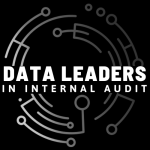
Duplicates – a data analytics skill that covers many issues in Finance, P2P, O2C and HR
(April 23rd, 2024 9AM NY time)
FREE TUESDAY WEBCLASS 9AM EST
What tips and tricks can we deploy to easily track duplicates. Deep-dive into ACL, SQL and QLIK code that helps us to find duplicates. Which types of duplicates are interesting and which are not important for the auditor to flag based on our understanding of SAP (Duplicate master data, duplicate transactional data – journal entries, payments, invoices and orders, duplicate expenses) – what are the risks that we are looking for in each case?
Meet Your Host
Claire Worledge will be your host for this webclass. She will share with you her 23 years experience in data analytics for internal auditors

Ex-big 4 data analytics manager, Certified Fraud Examiner and IT auditor
.. also loves running and bio-hacking!
… author of Data Analytics Secrets


Thanks For All The Amazing Content!
“Thanks for all the amazing content in the webclasses. We have learned quite a lot and this is helping the team to get going with SAP data analytics, as well as challenging our consulting vendors!”
Celia, Head of Internal Audit
What We Cover in Our Webclasses
During our Data Leaders In Internal Audit Tuesday Webclasses we are gaining insights on the following:
How do the Big 4 firms do data analytics?
What does the IIA, ISA, ACFE and ISACA say about data analytics?
What risks should be avoided when using data analytics in internal audit?
How can we train our auditors so that they can successfully use data analytics in their work?
What are the most obvious fraud schemes that data analysts need to be aware of?
What do “normal“ auditors and data analysts need to understand to make an efficient team?
Which data do you need to extract from SAP and how should it be interpreted?
How can we leverage data to see risks in the entity and better prepare the audit?